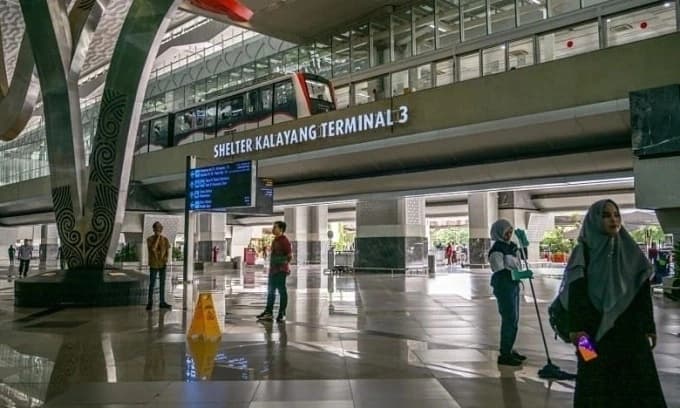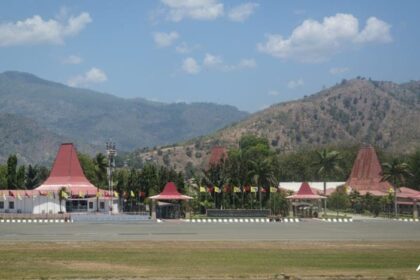Why this rollout matters for travelers
Indonesia has introduced biometric corridors that allow international arrivals to clear immigration while walking. The country is the first to move beyond gates and counters with a system that checks identity in motion. Built on Amadeus AI enabled biometrics and deployed with the Directorate General of Immigration, the corridors remove the final pause that travelers associate with border control. Instead of stopping at a booth or an automated gate, eligible passengers move through a wide lane where cameras confirm who they are and the system approves entry.
- Why this rollout matters for travelers
- How the biometric corridor works
- Where it is available and who can use it first
- What the Hajj stress test revealed
- Technology partners and the science behind on the move biometrics
- Privacy, consent, and data security considerations
- How Indonesia fits into global border innovation
- Potential benefits and remaining challenges
- Key Points
Two corridors are now live at Jakarta’s Soekarno Hatta International Airport and a third at Surabaya’s Juanda International Airport. The initial rollout sits within the government led All Indonesia program to simplify and speed up arrivals. In the first phase, the service supports seniors and passengers with disabilities who often face the hardest time in long lines. The goal is national coverage for all travelers once the model proves reliable at scale. Through the All Indonesia app, travelers can pre register, share passport details, and complete required declarations in one place. Immigration runs checks before the flight. On arrival, the passenger walks through the corridor, identity is verified on the move, and the journey continues without showing documents or handling paper.
How the biometric corridor works
At the heart of the corridor is a simple idea, identity is confirmed while you move. Enrollment happens remotely through the All Indonesia app, which also combines immigration, customs, health, and quarantine declarations. Once a traveler opts in and submits passport data, the authority runs background checks and creates a secure ticket for that journey. When the traveler reaches the corridor, final authentication occurs as multiple cameras capture a live image and match it to the pre cleared record. The person keeps walking, guided by signals on screens, and the system completes the check in seconds.
The corridor uses a multi camera array and 3D imaging to handle angles, varied heights, and small groups. Presentation attack detection helps spot spoofing attempts such as printed photos or screens. Image quality must meet international standards, so the system discards frames that lack sharpness or lighting. Machine learning distinguishes how many people are in view and focuses tracking on the authorized traveler. Border officers station at the end of the lane with tablets to resolve exceptions, for example when a match confidence falls below threshold or a traveler needs extra assistance.
Rudy Daniello, executive vice president for airport operations at Amadeus, said the intent is to remove friction without sacrificing security.
“In combination with digital identity and biometrics at key airport service points, it is now possible to provide a truly seamless, secure experience with no paperwork, no queues and no physical barriers.”
In field performance in Indonesia shows an identification rate above 98 percent while maintaining strict image quality. Remote identity verification is central to the approach, since most checks happen before the flight and the corridor performs the final step only.
Where it is available and who can use it first
The first corridors are installed in Jakarta and Surabaya. Access in the early phase is limited to elderly travelers and passengers with disabilities, who can enroll through the All Indonesia app at home and receive guidance at the airport. The lanes are wide and step free, designed to accommodate wheelchairs and assistance devices. Officers remain available for travelers who prefer traditional processing.
Indonesia is running the corridors alongside 243 automated border control gates already in service. That hybrid approach eases pressure on existing lanes while the corridor matures. Officials plan to extend access to all eligible passengers over time and to replicate the model across the country under the All Indonesia program.
What the Hajj stress test revealed
Indonesia tested the concept during the Hajj season. Large groups of pre registered pilgrims traveled between Indonesia and Saudi Arabia, creating a high volume environment well suited for a new process. Each corridor processed more than 30 border crossings per minute at peak times, roughly a tenfold increase over current biometric eGates. More than 50,000 pilgrims were processed with the system, an early indication that on the move verification can handle intense surges.
At 30 crossings per minute, a single corridor can move about 1,800 people per hour with continuous flow. Higher throughput shortens waits and changes operations. Officers spend more time handling exceptions rather than checking every traveler, a model that fits peak events and banked late night arrivals in Jakarta and other busy hubs.
Technology partners and the science behind on the move biometrics
The deployment is a collaboration between Amadeus and PT Sinergi Teknoglobal Perkasa with the Directorate General of Immigration. The project pairs a global travel technology platform with local integration, training, and support so Indonesian teams can run and evolve the system. Andi Syach, CEO of Sinergi Teknoglobal Perkasa, has described the work as a partnership that combines global expertise with local innovation and builds long term capability in Indonesia.
The corridor builds on years of progress in biometric capture at speed. A multi camera system captures multiple faces and bodies in real time, then a matcher evaluates quality, liveness, and similarity against the pre cleared record. Industry trials have pushed vendors to reach high accuracy in challenging lighting and motion. In Indonesia, the reported in field identification rate is above 98 percent. Border staff manage exceptions at the end of the lane using tablets, a shift that lets the rest of the flow stay in motion.
Privacy, consent, and data security considerations
Public consent underpins the model. Travelers choose to enroll through the All Indonesia app, share passport data, and allow pre arrival checks for that trip. The corridor performs targeted identification based on the pre registered record, not a search of a large central database of every visitor. That design, along with clear consent and purpose limits, is intended to reduce privacy risk while improving security and convenience for travelers who opt in.
Communication is as important as code. Countries that align immigration authorities, airports, and airlines, and explain how data is used and retained, tend to move faster. Regions with stricter data rules can adopt on the move biometrics when controls are built in, and Finland shows how advanced biometrics can work under strong privacy laws. Indonesia’s inclusive, opt in start for elderly and disabled travelers is a cautious way to introduce the model and build trust across the traveling public.
How Indonesia fits into global border innovation
A number of markets have pushed biometric travel for years, including the United States, Australia, the Middle East, and the United Arab Emirates. Europe has moved more carefully because of data protection and upcoming changes to border procedures. Indonesia is the first to deploy a corridor where identity is confirmed while walking at national scale.
Other hubs have tried partial versions. Dubai introduced a biometric path in 2018 that still required travelers to pass through eGates. Amadeus is piloting contactless smart gates in Manchester and similar processes in Curacao. Indonesia’s model removes the last physical stop at the border and applies it to multiple airports under one program, setting a new reference point for the region.
Potential benefits and remaining challenges
Benefits run beyond shorter lines. Corridors are wide and step free, which helps passengers who use wheelchairs or need assistance. The contactless approach cuts paper handling and lets officers focus on complex cases instead of repetitive checks. For airports that struggle with late night or seasonal peaks, moving more people per hour without adding booths can unlock capacity and smooth the passenger journey.
Challenges remain. Cameras must perform in varied lighting and face coverings can reduce match rates. Systems must handle false rejects gracefully with quick exception processing and offer clear fallback for travelers who do not or cannot enroll. Cybersecurity and data retention need to be transparent and audited. Expansion from seniors and disabled travelers to the general public will test reliability at scale, staffing models, and how well the app driven journey fits different trip types.
Key Points
- Indonesia is the first country to operate biometric corridors that verify identity while travelers walk, removing the need to stop at immigration.
- Three corridors are live, two at Jakarta’s Soekarno Hatta and one at Surabaya’s Juanda, with expansion planned nationwide.
- The first phase focuses on seniors and passengers with disabilities who can pre register via the All Indonesia app.
- Pre screening is completed before arrival, and final authentication happens inside the corridor using facial biometrics.
- During Hajj operations the system processed more than 30 passengers per minute per corridor and handled over 50,000 pilgrims.
- Corridors operate alongside 243 automated border control gates to relieve congestion at busy airports.
- Amadeus provides the core technology in partnership with PT Sinergi Teknoglobal Perkasa and Indonesia’s immigration authority.
- The corridor uses multi camera capture, 3D imaging, and presentation attack detection, with in field identification above 98 percent reported.
- Enrollment is opt in and targeted identification is used, not a large central database of all visitors.
- Global adoption varies, with the UAE, the United States, and Australia already advanced; Indonesia’s approach removes the final stop that eGates still require.












